
On Mar. 1, 2017 in Anaheim, CA, LEDs Magazine announced the winners in the 2017 Sapphire Awards program with a Gala taking place coincident with the Strategies in Light trade show. The Gala closed with the announcement of the Sapphire Illumineer of the Year — Alexander Wilm, a senior key expert for solid-state lighting (SSL) at Osram Opto Semiconductors. We had a chance to talk with Wilm about the Sapphire Award, and explore his insight into the advancement of LED technology for general lighting applications. Wilm also discussed exciting applications in the automotive and horticultural areas.
Interested in articles & announcements on packaged LEDs & solid-state lighting design?
LEDs Magazine: Can you tell us what you were thinking going into the Gala, and perhaps a little of your feelings after winning?
Alexander Wilm: I was excited, of course! It’s a great honor just to be nominated as one of the finalists. The impressive location, the people, the mood, and the glamour. I also appreciated the wonderful opportunity to meet up with the influencers of the lighting industry. Being named Illumineer of the Year was a great honor — one that would not have been possible without the support and contributions from the entire team who was responsible for our achievements. This award belongs to all of us.
LEDs: How did you come to pursue your work in color consistency, especially targeting general lighting applications? We know you have worked in many other application areas. But give us some background on how the 10° binning program was started and how it has evolved.
Wilm: When we started our work in general lighting applications in 2008, the color rendering and color consistency were still significant challenges for the new light source in the general lighting market. We did a lot of intensive studies, especially on color rendering and color perception, to prove that the new light source could compete with the established ones. During these experiments, we realized for the first time that if two light sources with different spectra in two different boxes are tuned in to exactly the same color coordinates, there can still be perceived color differences. When this happened the first time, we checked the measurement equipment and then used a different spectrometer, luminance cameras, and other test subjects, but the result was always the same: The color coordinates were identical but the white looked different.
After discussing our findings with scientists and experts from universities, we quickly learned that this is normal and a characteristic of our eyes. But this was only the beginning as scientific experiments and the necessary accuracy vary greatly from the standards in general lighting. This changed with the higher requirements on light quality and color consistency. From the Full ANSI Box to 5 SDCM [standard deviation of color matching, also called MacAdam ellipses] down to 3 SDCM and even 1 SDCM, the tighter color binning led to exactly the same experience like we faced during our initial experiments: Even though color differences might not be detected by measurements, in some cases you may see differences when you least expect them.
Then the solution was obvious: Just apply the latest 10° color space to the LED binning and measure the color coordinates under conditions that are matching the real observation conditions. This was far more effective than the established 2° color space.
LEDs: How widely is the issue with the 2° space recognized in the SSL industry? We hear lighting designers discuss color uniformity and consistency at conferences on a regular basis. But most never mention that there is perhaps a fundamental problem with the component binning process.
Wilm: The issue with the 2° and the 10° color space is still quite new for the SSL industry. It may be very well known by universities, but there is not much implementation in the lighting world outside of research. Maybe a comparison to the discussion about CRI can be used as a similar example. With higher expectations of light quality, a better understanding of and the need for new metrics is higher. There have been several proposals like FCI [feeling of contrast index], GAI [gamut area index], and CQS [color quality scale] in the past to address the issue, but only since the publication of the TM-30-15 are more and more people understanding that 1) color rendering is only one axis of a more dimensional color quality problem, and 2) an additional axis with the color gamut helps to describe and understand the effect of light spectra. Here, a thorough publication of information is necessary to inform the SSL industry of changes that may help to solve some challenges, as many in the industry are not aware that there are real solutions for the problem. The 10° binning is facing similar challenges: The market experiences problems for which the scientists have already developed solutions, but we have to inform the industry and apply it to the general lighting market in order to solve the problems.
LEDs: What has been the reception to 10° binning from customers? Are lighting manufacturers deploying products at this point?
Wilm: Our customers are very interested in the 10° binning. Some had already experienced the problems described earlier, and the tighter binning did not protect them from visible color differences. Others don’t feel the urgency yet, but still agree that the physiology is correct and a color space based on a 10° observer may be more reasonable. We are perfecting our products with the 10° binning feature in the COB [chip on board] LED, initially binning in the 2° color space to enable our customers to fulfill existing specifications and then performing an additional check in the 10° color space to avoid large color variations. Therefore, everyone who is using the Soleriq S13 with the 10° binning feature in their products is deploying a luminaire with a binning in the 10° color space in the market. The target is, of course, to go to a binning only in 10° to achieve the full potential of color consistency also across LED families, generations, and even manufacturers.
LEDs Magazine thanks the LED & Lighting Network team and the industry experts on our judging panel for all their work in making the Sapphire Awards possible. Visit ledsmagazine.com/sapphireawards
for updates on the 2018 submissions, event, and more.
LEDs: Will Osram expand the program? Is it still limited to the COB products at this point?
Wilm: Currently, the 10° binning feature is limited to the COB products, but we are also investigating extension to other product families. This will enable a complete mix between different LED packages and power classes and ensure a solid color consistency. Our work on new LEDs is also supported by extensive information and standardization efforts. As you mentioned earlier, we need to promote the idea in the lighting market, and an internationally recognized standard where independent color coordinates are defined would help tremendously in this respect. We continue to work on these topics and will advise of any developments.
LEDs: Can LED manufacturing evolve to the point where binning may not be required?
Wilm: We would still need to inquire: What are your requirements and what do you consider as binning? A quick light-up test of the LED after the final assembly of chip and package may remain to ensure that the LED is working properly. A measurement of characteristic parameters during this light-up test is then also not a problem at all. From this measurement, we derive properties such as brightness, forward voltage, and color coordinates. Now it is up to the requirements if, e.g., the measured color coordinates match the expectations. We are very confident that we could target, produce, and hit with the color coordinates inside an ANSI box, for example, and we could in theory skip the color binning in this case. If the requirement is a 1-SDCM ellipse, the challenge is much higher and we don’t see a way around color binning at this point. But keep in mind that binning is also providing additional information. Therefore, we don’t think we will get rid of an LED measurement in the future, and increasing the process capabilities will increase the yield in the desired and required properties such as color consistency. To answer your question, with the increasing demands on light quality and consistency, we don’t see a “binning free” LED anytime soon.
LEDs: Switching gears, Osram also won a Sapphire Award for the Duris P 10. Our judges appreciated that the LED borrows some elements from the mid- and high-power sectors. Do you see this as a trend going forward?
Wilm: Demands from customers will often trigger new designs, and in this case the strong demand for lower cost of the high-power LEDs led to the combination of a cost-efficient lead frame combined with high-luminance surface-emitter chips. In the past, these LEDs have typically been realized with ceramic submounts that have been reduced in size significantly to ensure a good cost position, but the change to a copper lead frame is still one way of offering a cost benefit with the Duris P 10 to our customers. All our robustness and qualification tests have been very positive, and the second-board reliability of this new approach is especially outstanding. We can offer high performance with excellent quality for an attractive price, and the Duris P 10 is only one LED out of the Duris P family. The smaller members are the 2W Duris P8 and the 4W Duris P9. With these products available, this unique combination of elements of mid- and high-power sectors is very promising, and we definitely see this trend continuing.
LEDs: What about application areas beyond general lighting? We know you have worked in automotive. What are the latest trends in that sector?
Wilm: If connected lighting is the trend in general lighting, smart lighting is definitely the upcoming development in automotive lighting. Adaptive forward lighting, where the illumination of the road is adjusted based on the respective traffic situation, is already available in many cars. However, the development of the first smart pixelated LED headlamp, also called μAFS [micro-structured adaptive front lighting system], is bringing this feature to a completely new level [see http://bit.ly/2f9pQNV for coverage of the initial prototype]. A cross-industry research project has developed a new generation of automotive illumination systems by combining LED pixels and driver circuitry. This system allows individual and precise control of the 1024 pixels, ensuring optimum light conditions at all times without dazzling other drivers, leading to greater safety and more convenient driving conditions. This revolutionary combination is the latest trend in the sector and may also inspire other applications in different markets.
LEDs: You have also spoken at times about horticultural lighting, right? Osram is clearly among the leaders supplying components into that sector. But we are continually amazed at how fast things are changing. Thoughts about light recipes evolve continuously. And now we are even hearing about UV LEDs being added to the mix. Give us some thoughts on horticulture.
Wilm: To be honest, when I heard the first time about horticulture lighting I was smirking a bit. The idea of growing food under artificial lighting if sunlight is available for free sounded, especially with pricey LED technology, more like a ridiculous notion than an innovative idea. But maybe that also attracted me to this application! Now, after several years being involved in the horticulture lighting LED business, I learned that horticulture lighting is much more than just growing tomatoes. The true benefit of LED technology is the easily adjustable light spectrum that enables you to control the plant by changing the ratios, intensity, and timing of the illumination and influence its shape of growth, the time of flowering, and even the taste and nutritional content of the crop. The application has already moved far away from supplemental lighting for tomato greenhouses to complete plant factories or vertical farms featuring growth without daylight, to growth of medicinal plants under sterile conditions where, for example, one can harvest the foundation of cancer medicine from algae. There are so many things to discover as we are now witnessing an exciting time where a niche application for LEDs transforms into an innovative and paradigm-changing illumination technology. In this world of an aging society, mega cities, and tougher environmental and climate conditions, I see horticulture lighting as a small but important contribution to a better future.
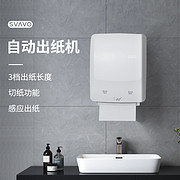

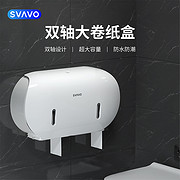
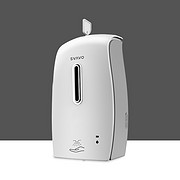

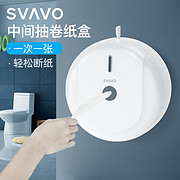

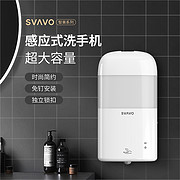


Service Hotline
Work Time:Mon-Fri 9:00-18:00
UTC+8

Sinoexpo Digital Platform
Copyright 2006-2024 Shanghai Sinoexpo Informa Markets International Exhibition Co., Ltd. All rights reserved
沪ICP备05034851号-77
 沪公网安备 31010402000543号
沪公网安备 31010402000543号